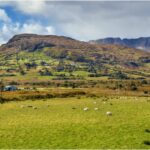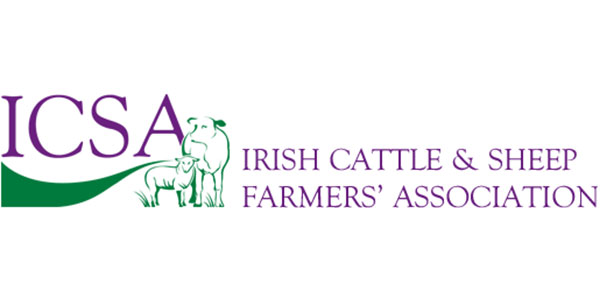FARMING INDEPENDENT – 20 JULY 2016
 1
1Visitors to the Cosgrave farm at Enfield, Co Meath are naturally full of questions not just about the unusual eye-catching round shed but also what is inside.
Jim and his son Jimmy Cosgrave were travelling over to the UK for the National Beef Association’s beef events for several years and it was a few visits to farms in the region with Luing cattle that caught their eye.
“We thought they were a super breed,” they explain.
The Luing cattle were bred by the Cadzow brothers on the island of Luing in Argyll off the west coast of Scotland for their ruggedness. They selected some of the best Beef Shorthorns for their fleshing qualities and the Highlander for their ruggedness and hardiness. The continued to follow good lines and it evolved in to the Luing breed which was recognised as a breed in its own right in the UK in 1965.
There are other farmers with the Luing breed throughout the island of Ireland.
“We had Black Angus cattle on the farm and we were finding it quite hard to find a true Angus and when they were up for sale, they were at high prices so they were at a premium,” says Jimmy. “It was getting harder and harder to source these cattle. We decided to have a closer look and we went to a sale and bought 11 heifers in ’08.”
He explains they’ve since brought in four lots including 20 in-calf two-year-old heifers last November.
“They are easy cattle to work with temperament wise, they’re very fertile, we’d have a high percentage of twins from them. They are nice handy medium-sized weights, they don’t grow too big,” he says as farmers gathered on the Enfield property for the ICSA and Knowledge Transfer beef national event and farm walk. “We’re not firm believers in the huge big continental cows.
“The weights coming down is also suiting my Luing cow — if you can wean a calf that is 60pc of the mature cow that is what you want to be aiming for.
“All these supermarkets and factories don’t want the 450kg carcases any more — however, there is a place for them too.”
Now they are running around 40 purebred Luing cows on the farm, along with around 20 Simmental Luing crosses. However, they’ll be in the market for a Luing bull this spring after losing their last one.
“I’m mostly crossing with Simmental at the moment. My plan is that next spring we’ll have a bull and try and cut down on the cost of the replacements,” he says.
In addition they’ve 80 good commercial spring calving Black Angus and Limousin heifer crosses which were all put to Charolais bulls. So far they generally only kill the Luing bulls, with most of them fed to 800kg weights. “We’ve had pure Luing bulls killing out as Us,” he says. They mostly keep heifers as replacements, however, some stock is sold on as stores to other farmers for finishing.
He feels the Luing heifers have complemented the stock on the farm, while fetching a fair price on the market.
However, he does caution that with the current vageries of sterling they will be concentrating on their own replacements and it makes it far more pricey to consider more consignments from the UK.
On the 350ac cattle and sheep farm they grow 15-20ac of kale each year to try and outwinter the cows, with 45ac of spring barley and 20ac of winter
barley.
“That was cut last week for whole crop barley silage. It was a phenomenal crop and that is the basis of our winter diet for the weanlings,” he says.
“We feed soya with that and minerals over the winter. We bring the cows in about the middle of January as they get closer to calving and they just get silage and minerals.
“If the conditions and weather is good they are out 12 hours after they calf around the middle of February. We’re running around 130 cows and we’d finish up with around 124 cows in calf, getting the cows in calf isn’t too big a problem.”
However, he says they never needed the vet in the yard for non-routine illnesses until February 9 of this year. “They got pneumonia and chills and as the year went on we had an outbreak of crypto. Year to year everything brings something different.
“We lost more calves than usual this year. We don’t lose too many at calving. A month old is generally when the critical part of it is,” he says.
“We try and sell them on to repeat customers. We’ve got really good customers that are happy with the cattle and come back for more.
“The way our system is working we didn’t think it was worth our while feeding them for finishing. We sell the stores off and whatever is not suitable we finish.”






